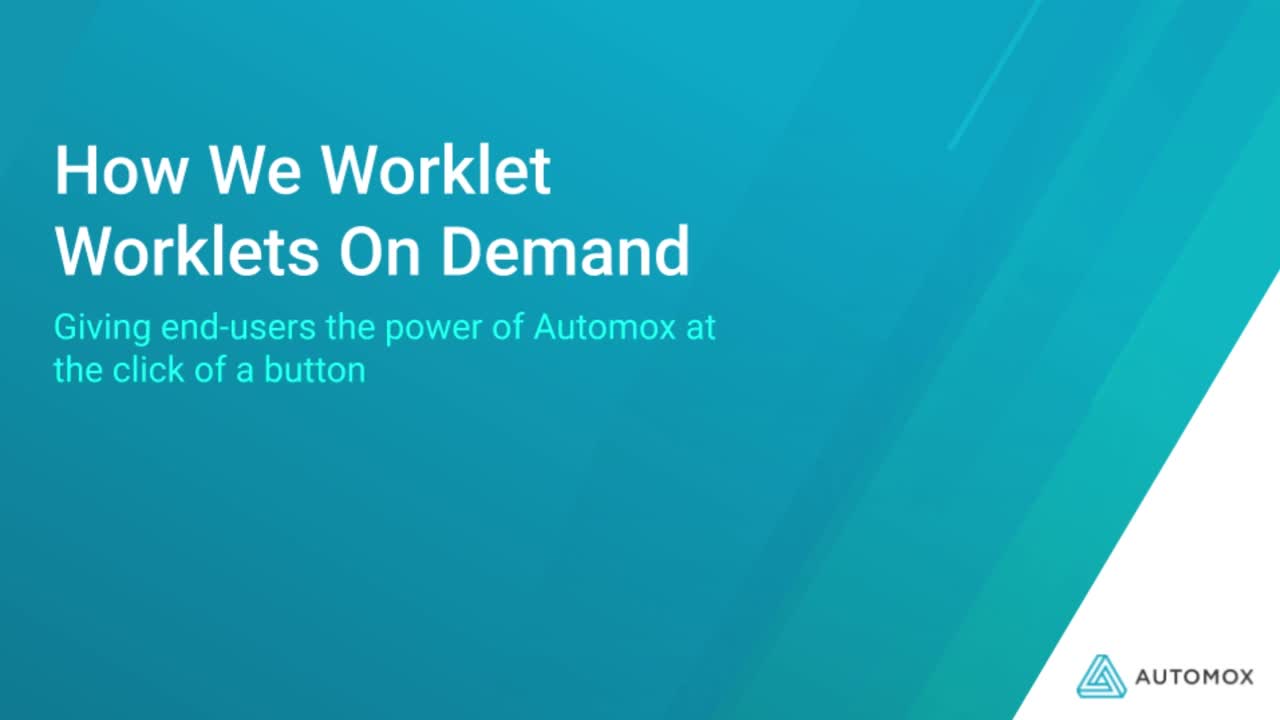Patch Tuesday Rapid Response Center: Your Action Plan
View our easily digestible insights from each month's Patch Tuesday releases.
Some of the most common tickets for the Automox helpdesk center around modifying adapter settings, configurations of local apps, gathering of data, or simply restarting an application or service (like print spooler!).
But solutions for these tickets can range from end-users following instructions they might not be technical enough to follow, to an Admin logging into the device via a remote desktop session. These things can be super time-consuming, but… they’re completely automatable with Automox!
In this video, Automox's David Van Heerden shares a demo on how to utilize Worklets on Demand to automate a myriad of tasks and win hours back in your day.

Video Transcript:
Hello everyone. My name is David Van Heerden. I'm the IT Operations Manager at Automox and today I'm gonna be demonstrating a use case for Automox Worklets that we've labeled Worklets on Demand.
Worklets on Demand are really just a way to allow your end users to perform administrative or cloud operations tasks at the click of a button, the Automox console and the Automox agent allow us to execute scripts on an end user's device or a dedicated server either on the cloud
or on an on-premise server.
And the Worklets that we create are now designed to enable end users to fix their own problems
on their machine that they either wouldn't be technically capable of doing themselves or simply restricted from doing because they are not administrators over their machines.
In this particular example today we'll be looking at Worklet that is going to gather system logs for a typical support scenario that we encounter with the net scope product. In this perspective we are an end user looking at the fresh service ticket portal and our end user is going to request a service and go and capture the Netskope logs that they need for their support ticket.
Now, this is the agent's view of the ticket where we can see the activity where a workflow triggered to run the API command to gather the logs and dump them on the desktop. Now looking at the workflow module and FreshService, we can see that the service request is raised.
We read a custom table to verify which service they requested. We do another conditions check at a tag and from there we read the requester's assets that are associated with them within FreshService and then we parse the UUID which is in the Automox console and is the server ID or just the device ID in the Automox console.
And please reference our API documentation to get the exact URL for your organization as well as the formatting and values for your Jason body. Now the UUIDs are synchronized with the Automox console utilizing the Automox app that you would need to set up within your FreshService account and just to quickly cover the alternate way of triggering webhooks against the device is by an agent going in through this menu, searching for the particular work let that they want to run on the endpoint and then executing it.
Now, just to explain how the custom objects work for Worklets on Demand. You just set up these three object records of the Worklet ID service item and the Worklet name and I'll show you in a minute how to get the specific Worklet ID and service item fields filled in. What you need to do is just create a new service request item and name it whatever you like.
Then inside of the Automox console you want to navigate to the policy or the Worklet that you want to run. And then just up in the URL just after policies, you'll see the exact policy ID or the Worklet ID that you would want to execute, and now that you've added that policy ID to the custom object record the workflow will execute that desired work lit when they submit the service request. This makes it a lot easier for your admins and help desk technicians to add new policies and Worklets to your service requests.
Now I'd like to leave you with one idea that might inspire you to solve some more complex problems within your own environment. Say you have a new employee that needs a myriad of applications, custom applications, or internal configurations applied to their machine.
Well, now that end users can go to their service portal and select the particular onboarding package for their role within the company and the fresh service workflows triggered by this request can execute a series of Automox Worklets. Now, I hope you enjoyed this video. I encourage you to check out the blog to get a little bit deeper into the step-by-step instructions and technical details of how this works. Otherwise, reach out to me on LinkedIn.
I'll be happy to answer any of your questions.